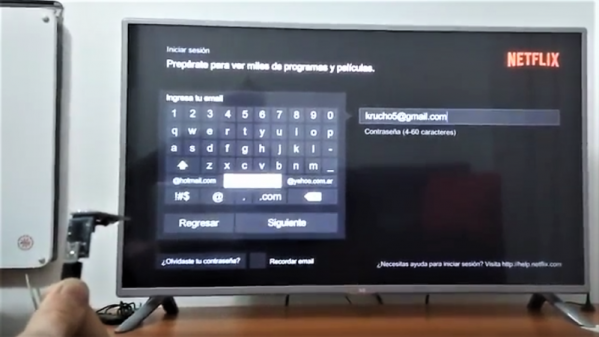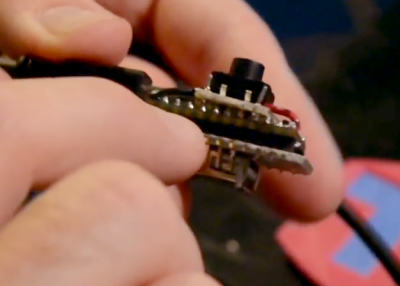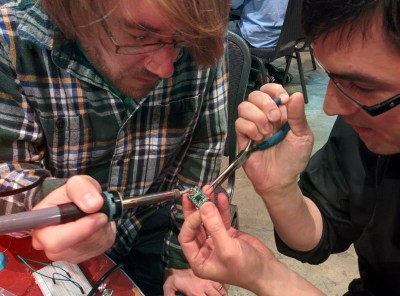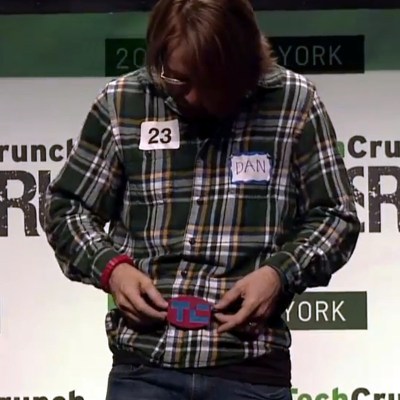Chances are anyone who has an entry-level to mid-range smart TV knows that setting them up with your streaming account credentials is a royal pain. Akin to the days of texting on a flip phone, using the number pad or arrow keys to compose your user name and password seems to take forever. So why not avoid the issue with this automated Netflix logger-inner?
As if the initial setup wasn’t bad enough, when [krucho5]’s LG smart TV started asking for his Netflix credentials every few days, he knew something needed to be done. An Arduino to send “keystrokes” was the obvious solution, but when initial attempts to spoof the HID on the set proved fruitless, [krucho5] turned to the IR remote interface. He used an IR receiver module to capture the codes sent while entering user name and password, and an IR LED plays it back anytime the TV ask for it. The video below shows how much easier it is now, and the method should work just fine for any other online service accounts.
We like [krucho5]’s build, but the fit and finish are a little rough. Perhaps slipping them into a pair of Netflix-enabled socks would be a nice touch?
Continue reading “Save Your Thumbs With This Netflix Password Sender”







 The idea started with the concept of a dedicated device to carry a complicated password; something that you couldn’t remember yourself and would be difficult to type. [Dan] also decided it would be much better if the device didn’t need its own power source, and if the user interface was dead simple. The answer was a wrist-band made up of a USB cable and a microcontroller with just one button.
The idea started with the concept of a dedicated device to carry a complicated password; something that you couldn’t remember yourself and would be difficult to type. [Dan] also decided it would be much better if the device didn’t need its own power source, and if the user interface was dead simple. The answer was a wrist-band made up of a USB cable and a microcontroller with just one button. [Dan] came up with the idea to have a pair of mating boards for the Teensy 2.0. One on top hosts the button, the other on the bottom has a USB port which is used as the “clasp” of the belt buckle. One side of the USB cable plugs into the Teensy, the other into this dummy-port. Early testing showed that this was too bulky to work as a bracelet. But [Dan] simply pivoted and turned it into a belt.
[Dan] came up with the idea to have a pair of mating boards for the Teensy 2.0. One on top hosts the button, the other on the bottom has a USB port which is used as the “clasp” of the belt buckle. One side of the USB cable plugs into the Teensy, the other into this dummy-port. Early testing showed that this was too bulky to work as a bracelet. But [Dan] simply pivoted and turned it into a belt. [Kenji Larsen] helped [Dan] with the PCB-sandwich. Instead of mounting pin sockets on the extra boards, they heated up the solder joints on a few of the Teensy pins and pushed them through with some pliers. This left a few pins sticking up above the board to which the button add-on board could be soldered.
[Kenji Larsen] helped [Dan] with the PCB-sandwich. Instead of mounting pin sockets on the extra boards, they heated up the solder joints on a few of the Teensy pins and pushed them through with some pliers. This left a few pins sticking up above the board to which the button add-on board could be soldered.














